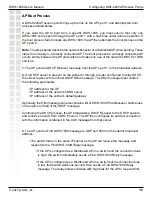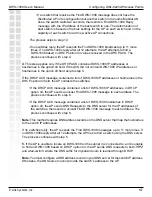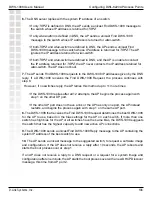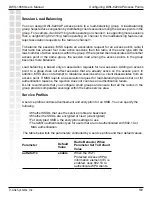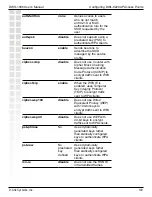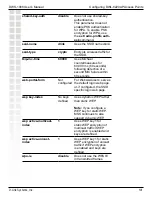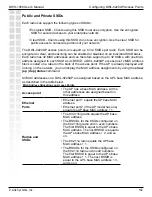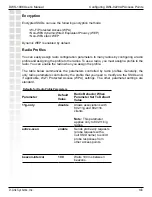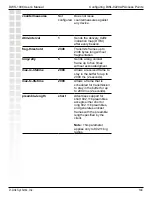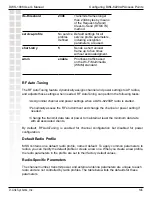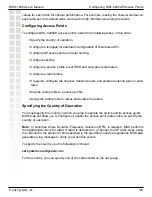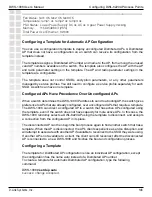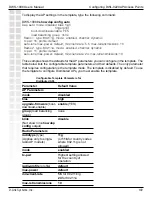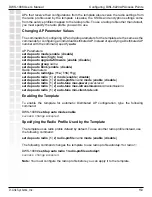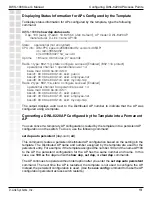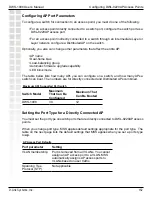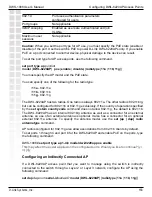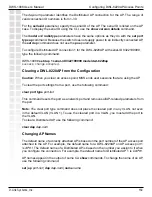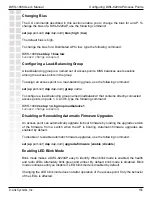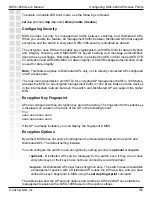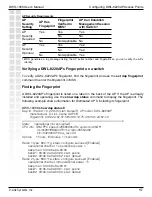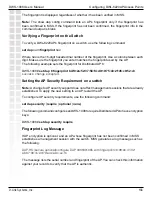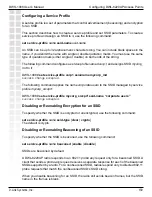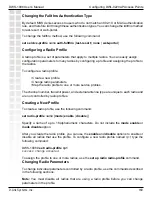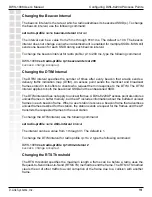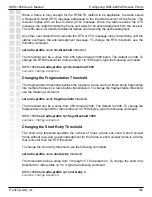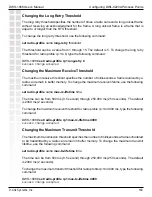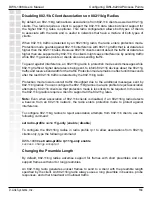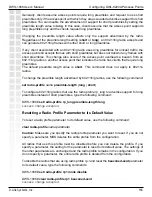
150
DWS-1008 User’s Manual
D-Link Systems, Inc.
Configuring DWL-8220AP Access Points
APs that receive their configurations from the template also receive the radio settings from
the radio profile used by the template. Likewise, the SSIDs and encryption settings come
from the service profiles mapped to the radio profile. To use a radio profile other than
default
,
you must specify the radio profile you want to use.
Changing AP Parameter Values
The commands for configuring AP and radio parameters for the template are the same as the
commands for configuring an individual Distributed AP. Instead of specifying a Distributed AP
number with the command, specify
auto
.
AP Parameters:
set
dap
auto
mode
{
enable
|
disable
}
set
dap
auto
bias
{
high
|
low
}
set
dap
auto
upgrade-firmware
{
enable
|
disable
}
set
dap
auto
group
name
set
dap
auto
blink
{
enable
|
disable
}
Radio Parameters:
set
dap
auto
radiotype
{
11a
|
11b
|
11g
}
set
dap
auto
radio
{
1
|
2
}
mode
{
enable
|
disable
}
set
dap
auto
radio
{
1
|
2
}
radio-profile
name
mode
{
enable
|
disable
}
set
dap
auto
radio
{
1
|
2
}
auto-tune
max-power
power-level
set
dap
auto
radio
{
1
|
2
}
auto-tune
max-retransmissions
retransmissions
set
dap
auto
radio
{
1
|
2
}
auto-tune
min-client-rate
rate
Enabling the Template
To enable the template for automatic Distributed AP configuration, type the following
command:
DWS-1008#
set dap auto mode enable
success: change accepted.
Specifying the Radio Profile Used by the Template
The template uses radio profile
default
by default. To use another radio profile instead, use
the following command:
set
dap
auto
radio
{
1
|
2
}
radio-profile
name
mode
{
enable
|
disable
}
The following command changes the template to use radio profile
autodap1
for radio 1:
DWS-1008#
set dap auto radio 1 radio-profile autodap1
success: change accepted.
Note:
You must configure the radio profile before you can apply it to the template.

